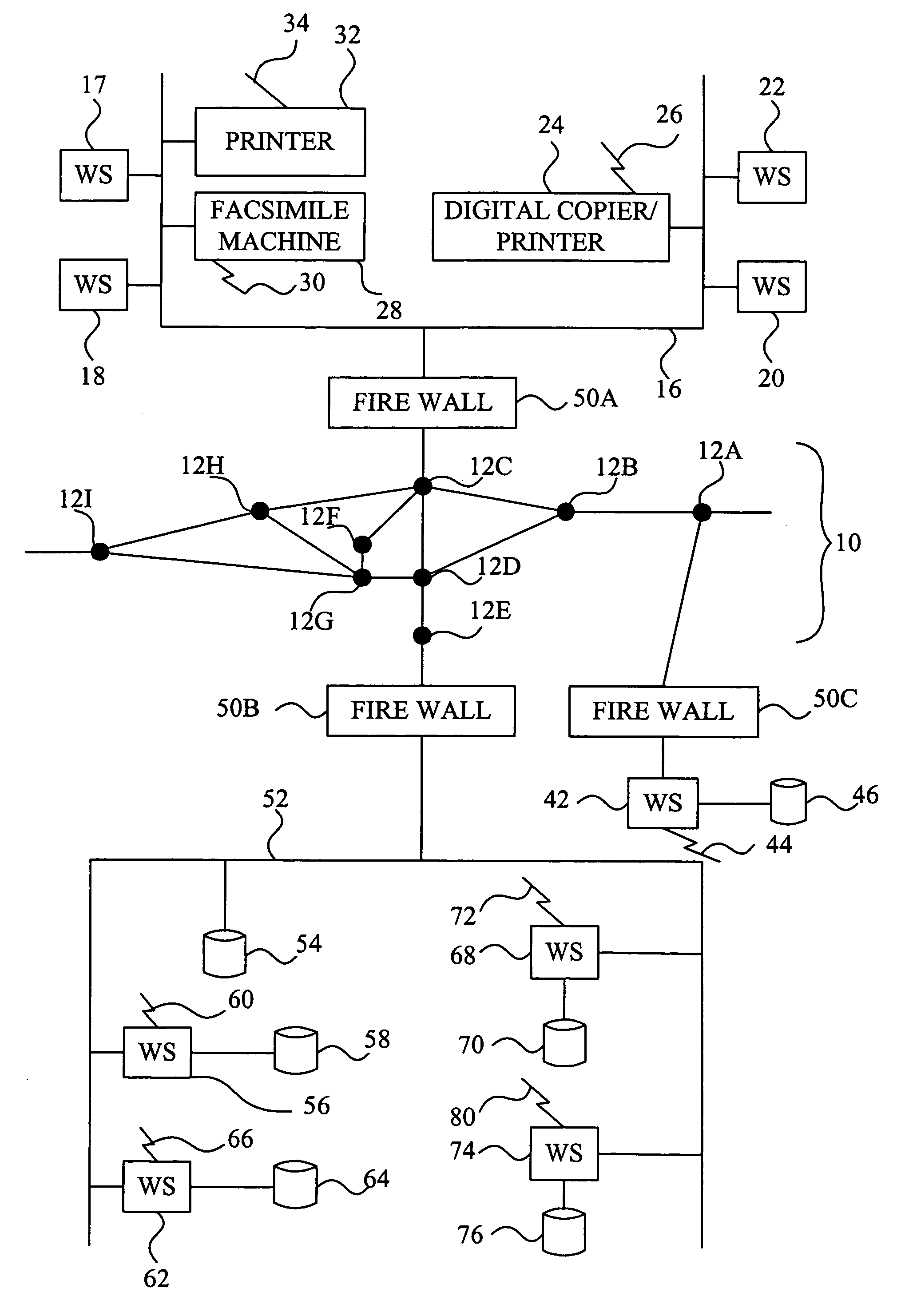Method and system of remote monitoring and support of devices, using POP3 and decryption using virtual function
a technology of remote monitoring and support, which is applied in the direction of program control, unauthorized memory use protection, instruments, etc., can solve the problems of increased cost and time delay, significant software modifications, etc., and achieves the effect of quick and easy change of encryption/decryption technique, easy and efficient operation, and easy and fast change of encryption level
- Summary
- Abstract
- Description
- Claims
- Application Information
AI Technical Summary
Benefits of technology
Problems solved by technology
Method used
Image
Examples
Embodiment Construction
[0035]In describing preferred embodiments of the present invention illustrated in the drawings, specific terminology is employed for the sake of clarity. However, the invention is not intended to be limited to the specific terminology so selected, and it is to be understood that each specific element includes all technical equivalents that operate in a similar manner to accomplish a similar purpose.
[0036]Referring now to the drawings, wherein like reference numerals designate identical or corresponding parts throughout the several views, and more particularly to FIG. 1 thereof, there are illustrated various machines, along with computers for monitoring, diagnosing and controlling the operation of the machines. In FIG. 1, there is a first network 16, such as a Local Area Network (LAN), connected to computer workstations 17, 18, 20 and 22. The workstations can be any type of computers including, e.g., IBM Personal Computer compatible devices, Unix-based computers, Linux-based computer...
PUM
 Login to View More
Login to View More Abstract
Description
Claims
Application Information
 Login to View More
Login to View More - R&D
- Intellectual Property
- Life Sciences
- Materials
- Tech Scout
- Unparalleled Data Quality
- Higher Quality Content
- 60% Fewer Hallucinations
Browse by: Latest US Patents, China's latest patents, Technical Efficacy Thesaurus, Application Domain, Technology Topic, Popular Technical Reports.
© 2025 PatSnap. All rights reserved.Legal|Privacy policy|Modern Slavery Act Transparency Statement|Sitemap|About US| Contact US: help@patsnap.com



